Bright, zesty, and irresistibly moist, this Limoncello Cake is infused with citrusy limoncello syrup and topped with a cloud of toasted lemon meringue. It’s a show-stopping dessert that tastes like sunshine in every bite.
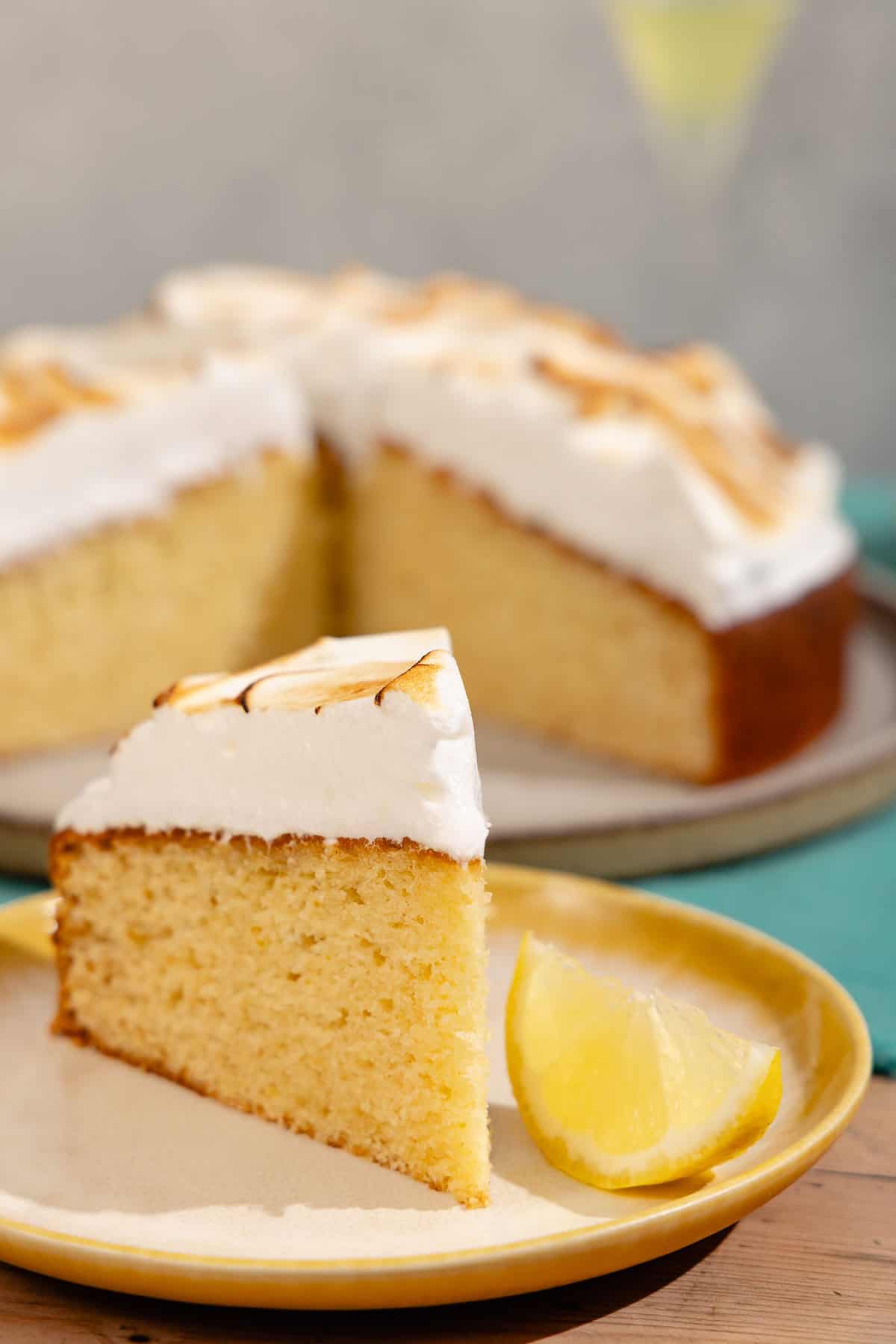
Limoncello is an Italian liqueur traditionally served as a digestif after dinner, which, coincidentally, is also the optimal time for cake. With its sweet and floral citrus aroma, limoncello inspired this gorgeous dessert that’s perfect for lemon lovers. Bursting with zingy lemon flavor, limoncello cake captures the weightless, unencumbered feeling of a vacation on the Amalfi Coast.
Instead of weighing the olive oil cake down with frosting, I opted for light-as-air Italian meringue. The striking toasted meringue on top makes this limoncello cake a glamorous dessert for a dinner party or special occasion, and it would be perfect for Mother’s Day. You can make the cake the night before, waiting to make the meringue just before guests arrive. Don’t worry! If it looks like too many steps, I have a few tips for simplifying it while maintaining a punch of limoncello flavor.
Table of Contents
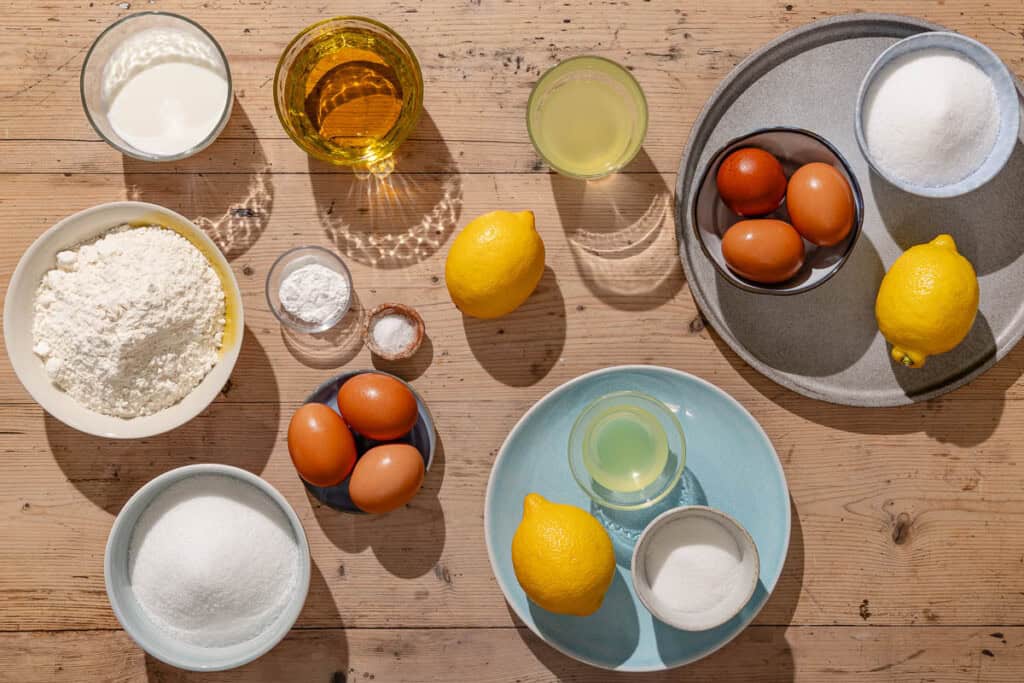
Ingredients for Limoncello Cake
Every component of this limoncello cake recipe contains a splash of limoncello, lemon juice, or freshly grated lemon zest, layering bright lemon flavor throughout the cake. Egg whites whip better at room temperature, so let them sit on the counter for 30 minutes to an hour before starting. Here’s what you’ll need:
For the Cake:
- Limoncello: This Italian lemon liqueur is traditionally served after dinner as a digestif. It adds a sweet and floral lemon flavor to the cake. It’s easy to find at a well-stocked liquor store or, if you have a few weeks, make your own, then use it to make a Limoncello Spritz to sip on while making this Limoncello cake!
- Lemon zest from 2 lemons adds lemony aroma to the cake batter. You’ll use the juice in the syrup and meringue.
- Eggs: You’ll need three whole eggs for the cake batter. Whipping the egg whites separately and gently folding them into the batter aerates the cake to give a light, fluffy texture.
- Sugar sweetens the cake while ensuring it’s moist and tender. Use granulated sugar or organic cane sugar.
- Extra virgin olive oil enriches the cake and adds a mild and fruity flavor that pairs beautifully with the limoncello.
- Milk: Whole milk will add the most richness to the cake; however, you can substitute it with reduced-fat milk. To make this cake dairy-free, use your favorite nondairy milk, such as soy, almond, or oat milk.
- Flour: All-purpose flour provides the structure for the cake. You can use one-to-one gluten-free flour, but the cake may end up slightly denser.
- Baking powder: In addition to the aeration from the whipped egg whites, baking powder also creates air that leavens the cake for a light, airy texture.
- Salt: A pinch of kosher salt enhances the other flavors in the cake.
For the Limoncello Syrup:
- Limoncello: To infuse the cake with a more obvious limoncello flavor, I use extra limoncello to make a syrup to brush on the cooling cake. For an alcohol-free option, substitute more lemon juice.
- Lemon juice: Add extra tart lemon flavor to the simple syrup by juicing one of the zested lemons.
- Sugar: Sugar sweetens the syrup, and once it is soaked in, it helps the cake retain moisture. A similar technique is used in semolina cake recipes like this basbousa cake.
For the Meringue:
- Sugar: Sugar forms the base of the syrup that sweetens and stabilizes the Italian lemon meringue.
- Water: Water is used to dissolve the sugar and form the syrup.
- Lemon juice: Some of the water in the syrup is replaced with lemon juice to give the meringue a lemon flavor. The acidity in lemon juice also helps to stabilize the egg whites.
- Egg whites: The proteins in egg whites provide the structure for a light and airy meringue. Save the yolks to make a batch of Aioli.
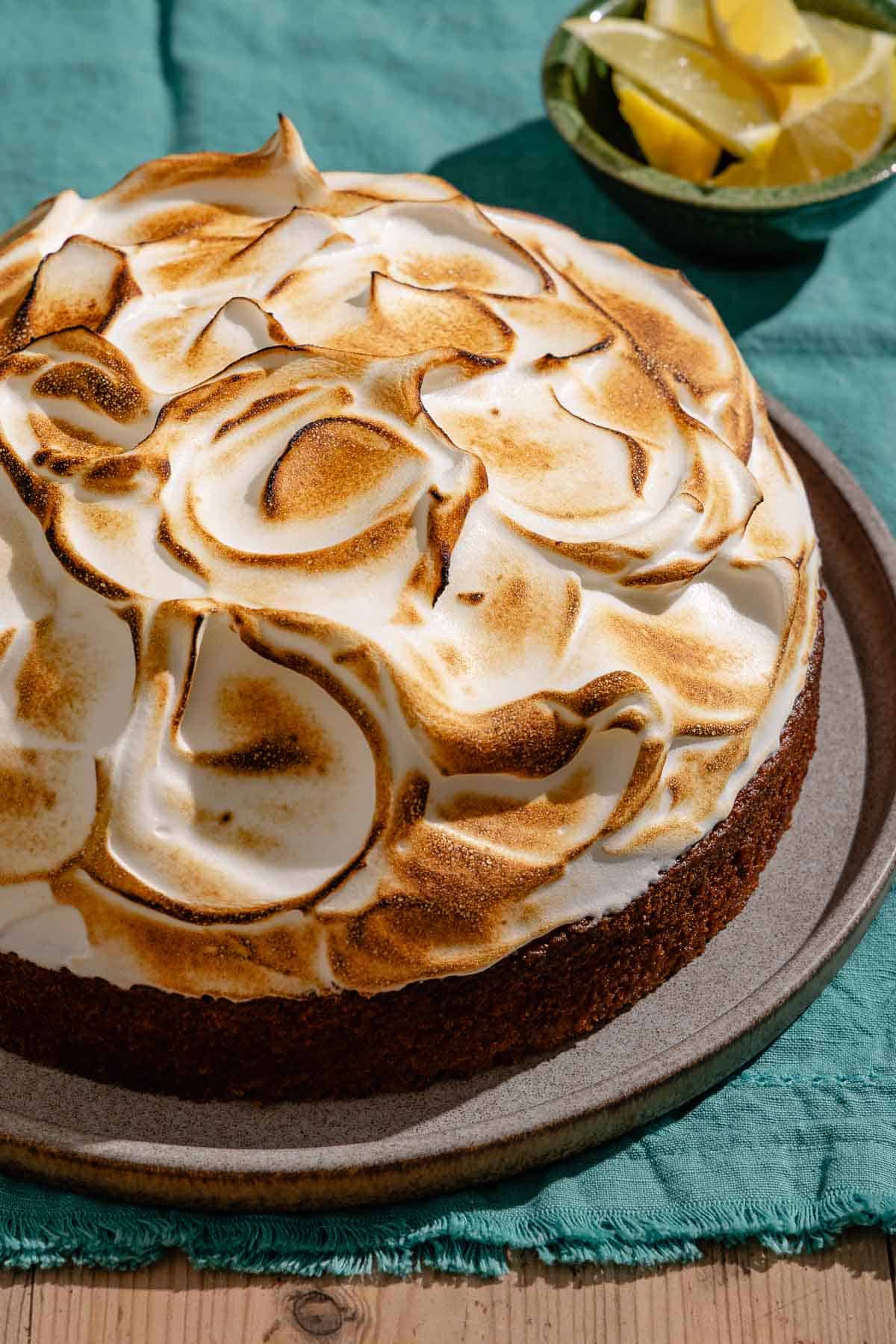
How to Make Limoncello Cake
While this limoncello cake has a few different components, it’s not too much to tackle in an afternoon baking project. The secret to the fluffy texture of the olive oil sponge cake base is beaten egg whites gently folded into the batter. The air trapped in the egg white foam expands while baking, making the cake extra light. A brushing of limoncello simple syrup while the cake cools infuses it with even more lemon flavor and ensures a moist texture. Here are the steps:
For the Cake:
- Get ready: Preheat the oven to 350°F. Brush the bottom and sides of a 9-inch springform pan with olive oil. Line the bottom of the pan with parchment paper, brush the parchment with a thin layer of olive oil, and set aside.
- Beat the egg whites to stiff peaks: Separate 3 large eggs. In a large mixing bowl with a hand mixer, whip the egg whites on medium-high speed until stiff peaks form, about 3 minutes. Set aside.
- Mix the wet ingredients: In another large mixing bowl, beat the egg yolks, 1 1/4 cups (250g) granulated sugar, and 3/4 cup (180ml) extra virgin olive oil on medium speed until smooth. Add 1/3 cup (80ml) whole milk, 1/3 cup (80ml) limoncello, and the zest of 2 lemons and beat on low speed until combined.
- Add the dry ingredients: Add 2 cups (240g) all-purpose flour, 2 teaspoons baking powder, and 1/2 teaspoon kosher salt and mix on low speed just until combined.
- Fold in the egg whites: Gently fold half of the beaten egg whites at a time into the batter with a wide spatula. To preserve as much of the air as possible, fold gently, rotating the bowl a quarter turn after each fold. Mix until no streaks of egg white remain before adding the second half.
- Bake: Pour the batter into the prepared pan. Bake for 48 to 53 minutes, or until a toothpick inserted into the center of the cake comes out clean.
For the Limoncello Syrup:
- Make the limoncello syrup: While the cake is baking, combine 1/4 cup (50g) sugar, 2 tablespoons limoncello, and 2 tablespoons lemon juice in a small saucepan. Heat over medium heat, stirring, until the sugar has dissolved. Set aside.
- Cool: Let the cake cool in the pan for 15 minutes. Then, carefully release it from the springform pan and set it onto a wire rack. Prick all over the top of the cake with a toothpick. Use a pastry brush to apply the limoncello syrup over the surface of the cake. You may not need all of the syrup. Let the cake continue to cool to room temperature.
For the Meringue:
Italian meringue, made by whipping hot sugar syrup into the egg whites, is the most stable and safe to eat without further cooking. I increase the lemon flavor by adding lemon juice to the meringue, which also helps to stabilize it. It’s luscious, smooth, and pillowy.
- Get ready. Separate 3 large eggs. Let the egg whites come to room temperature. Reserve the egg yolks for another use.
- Make sugar syrup for meringue: In a small saucepan, combine 3/4 cup (150g) sugar, 1/4 cup (60ml) water, and 2 tablespoons lemon juice. Bring to a boil over high heat. Do not stir. Cook until the syrup registers 240°F (116°C) on a candy or instant-read thermometer, 3 to 4 minutes.
- Beat the egg whites to soft peaks: Place the egg whites in a large heat-proof mixing bowl set on a damp tea towel or the bowl of a stand mixer fitted with the whisk attachment. The wet towel will prevent the bowl from sliding around on the counter while mixing. Beat the egg whites on medium-high speed until soft peaks form, 2 to 3 minutes.
- Add hot syrup to egg whites: With the mixer running, very carefully and slowly pour the hot syrup into the egg whites. Aim for the side of the bowl to avoid the beaters. Continue beating until stiff peaks form and the meringue is cool, 4 to 5 minutes.
- Top the cake: Place the cake on a cake stand or serving dish. Use an offset spatula or a spoon to spread the meringue on top of the cake, leaving decorative swoops and swirls.
- Brown and serve. Lightly toast the meringue using a kitchen torch, or by placing it under a preheated broiler for 30 seconds. Slice and serve. The cake is best the day it is made.
How to Simplify this Limoncello Cake
The limoncello cake, limoncello syrup, and lemon Italian meringue combine for a stunning dessert. But if you’re looking for a less involved baking project, there are plenty of options to simplify this cake without sacrificing much flavor. Here are my favorite, easier variations on limoncello cake:
- Skip the limoncello syrup: The limoncello syrup keeps the cake moist while infusing it with extra limoncello flavor. To save a few steps, you can skip the syrup or replace it by brushing on 2 tablespoons of limoncello instead.
- Skip the Italian meringue: I love the combination of the fluffy cake and airy lemon meringue, but working with the hot sugar required to make Italian meringue can be intimidating. Replace the meringue with a dusting of powdered sugar, whipped cream, or skip it altogether.
- Make a limoncello glaze: Instead of the meringue, cover the cake with a limoncello glaze. In a mixing bowl, whisk together 1 cup (125g) powdered sugar and 1 1/2 tablespoons limoncello into a smooth, pourable glaze. If it’s too thick, add more limoncello or lemon juice, 1 teaspoon at a time to reach the desired consistency.
- Serve with fruit: You can top the cake with fruit even if you keep the meringue. Serve slices with fresh or macerated berries, such as strawberries and raspberries, or this lovely Strawberry-Rose Compote.
What to Serve with Limoncello Cake
Serve this showstopper limoncello cake with more limoncello as a digestif or a refreshing limoncello spritz cocktail. It’s a festive celebration cake for brunch served alongside cucumber sandwiches, berry fruit salad, or as a finishing touch for a dinner party with friends.
More Lovely Lemon Desserts
Browse all Mediterranean recipes.
Visit Our Shop.
Limoncello Cake
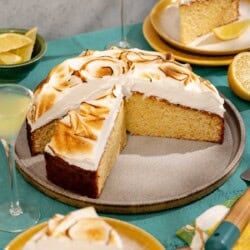
Equipment
Ingredients
For Limoncello Cake
- 3/4 cup extra virgin olive oil , plus more for greasing the pan
- 3 large eggs, room temperature, separated
- 1 1/4 cups (250g) granulated sugar
- 1/3 cup whole milk
- 1/3 cup Limoncello
- Zest from 2 lemons
- 2 cups (240g) all-purpose flour
- 2 teaspoons baking powder
- 1/2 teaspoon kosher salt
For Limoncello Syrup
- 1/4 cup (50g) sugar
- 2 tablespoons Limoncello
- 2 tablespoons lemon juice
For Lemon Italian Meringue
- 3/4 cup (150g) sugar
- 1/4 cup water
- 2 tablespoons lemon juice
- 3 large egg whites, room temperature
Instructions
- Get ready. Preheat the oven to 350°F. Brush the bottom and sides of a 9-inch springform pan with olive oil. Line the bottom of the pan with parchment paper, brush the parchment with a thin layer of olive oil, and set aside.
- Beat the egg whites to stiff peaks. In a large mixing bowl with a hand mixer, whip the egg whites on medium-high speed until stiff peaks form, about 3 minutes. Set aside.
- Mix the wet ingredients. In a large mixing bowl, beat the egg yolks, sugar, and olive oil on medium speed until smooth. Add the milk, limoncello, and lemon zest and beat on low speed until combined.
- Add the dry ingredients. Add the flour, baking powder, and salt and mix on low speed just until combined.
- Fold in the egg whites. With a wide spatula, gently fold half of the beaten egg whites at a time into the batter. To preserve as much of the air as possible, fold gently, rotating the bowl a quarter turn after each fold. Mix until no streaks of egg white remain before adding the second half.
- Bake the cake. Pour the batter into the prepared pan. Bake for 48 to 53 minutes, or until a toothpick inserted into the center of the cake comes out clean.
For the Limoncello Syrup
- Make the Limoncello Syrup. While the cake is baking, combine the sugar, limoncello, and lemon juice in a small saucepan. Heat over medium heat, stirring, until the sugar has dissolved. Set aside.
- Cool and drizzle. Let the cake cool in the pan for 15 minutes. Then, carefully release it from the springform pan and set it onto a wire rack. Prick all over the top of the cake with a toothpick. Use a pastry brush to apply the limoncello syrup over the surface of the cake. You may not need all of the syrup. Let the cake continue to cool to room temperature.
For the Meringue
- Make sugar syrup for meringue. In a small saucepan, combine the sugar, water, and lemon juice. Bring to a boil over high heat. Do not stir. Cook until the syrup registers 240°F (116°C) on a candy or instant-read thermometer, 3 to 4 minutes.
- Beat the egg whites to soft peaks. Place the egg whites in a large heat-proof mixing bowl set on a damp tea towel or the bowl of a stand mixer fitted with the whisk attachment. The wet towel will prevent the bowl from sliding around on the counter while mixing. Beat the egg whites on medium-high speed until soft peaks form, 2 to 3 minutes.
- Make the Lemon Italian Meringue. With the mixer running, carefully and slowly pour the hot syrup into the egg whites. Aim for the side of the bowl to avoid the beaters. Continue beating until stiff peaks form and the meringue is cool, 4 to 5 minutes.
- Top the cake. Place the cake on a cake stand or serving dish. Use an offset spatula or a spoon to spread the meringue on top of the cake, leaving decorative swoops and swirls.
- Toast and serve. Lightly toast the meringue using a kitchen torch, or by placing it under a preheated broiler for 30 seconds. Slice and serve. The cake is best the day it is made.
Notes
-
-
- Shop this recipe: Visit our shop to browse quality Mediterranean ingredients including the olive oil used in this recipe.
- Limoncello Cake Variations:
- Skip the limoncello syrup: The limoncello syrup keeps the cake moist while infusing it with extra limoncello flavor. To save a few steps, you can skip the syrup or replace it by brushing on 2 tablespoons of limoncello instead.
- Skip the Italian meringue: I love the combination of the fluffy cake and airy lemon meringue, but working with the hot sugar required to make Italian meringue can be intimidating. Replace the meringue with another topping, or skip it altogether.
- Make a limoncello glaze: Instead of the meringue, cover the cake with a limoncello glaze. In a mixing bowl, whisk together 1 cup (125g) powdered sugar and 1 1/2 tablespoons limoncello into a smooth, pourable glaze. If it’s too thick, add more limoncello or lemon juice, 1 teaspoon at a time to reach the desired consistency.
- Dust with powdered sugar: When I want a beautiful finish on a cake for the least amount of work, I dust it with powdered sugar. It instantly becomes elegant.
-
Nutrition
Bundle and Save!
Four of our best-selling signature olive oils, perfect for everyday use.
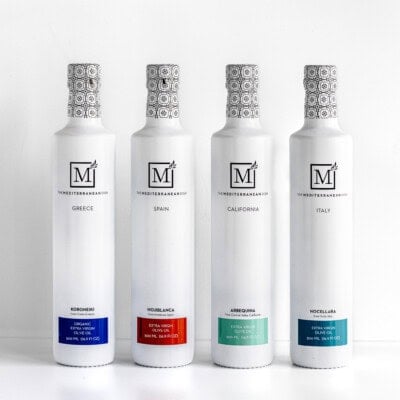




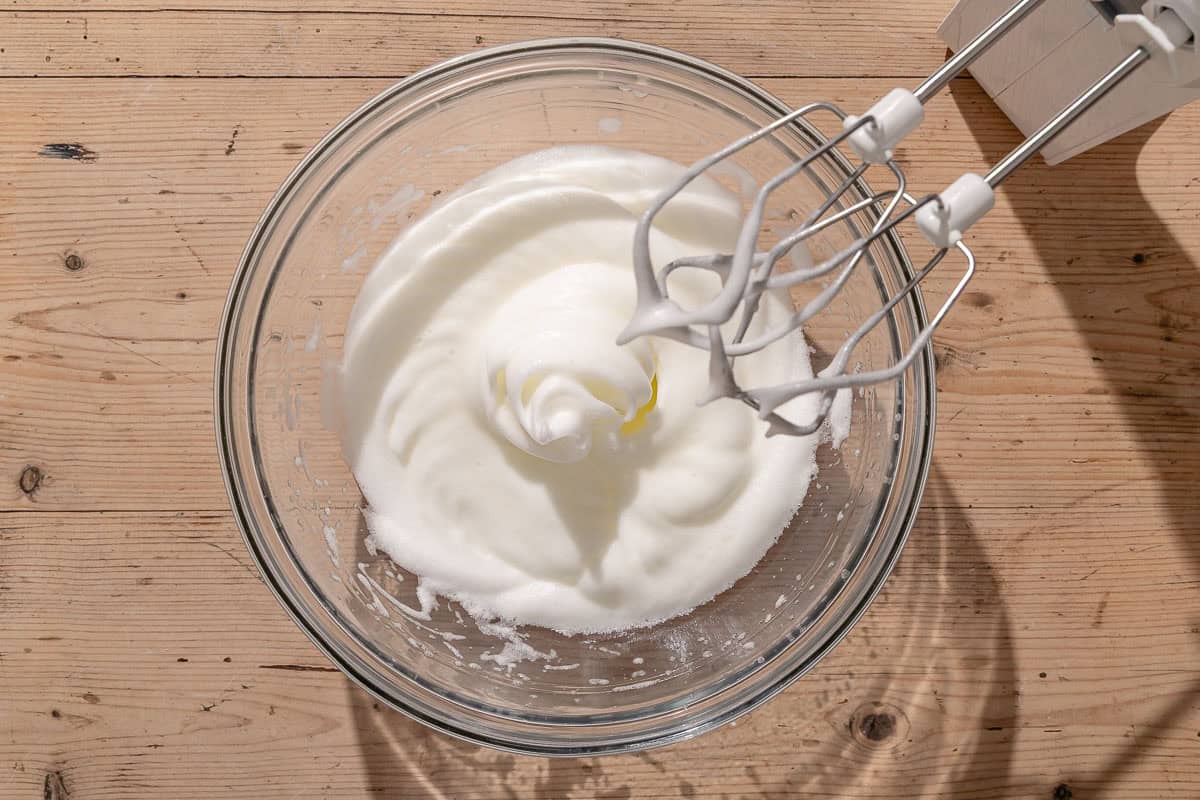
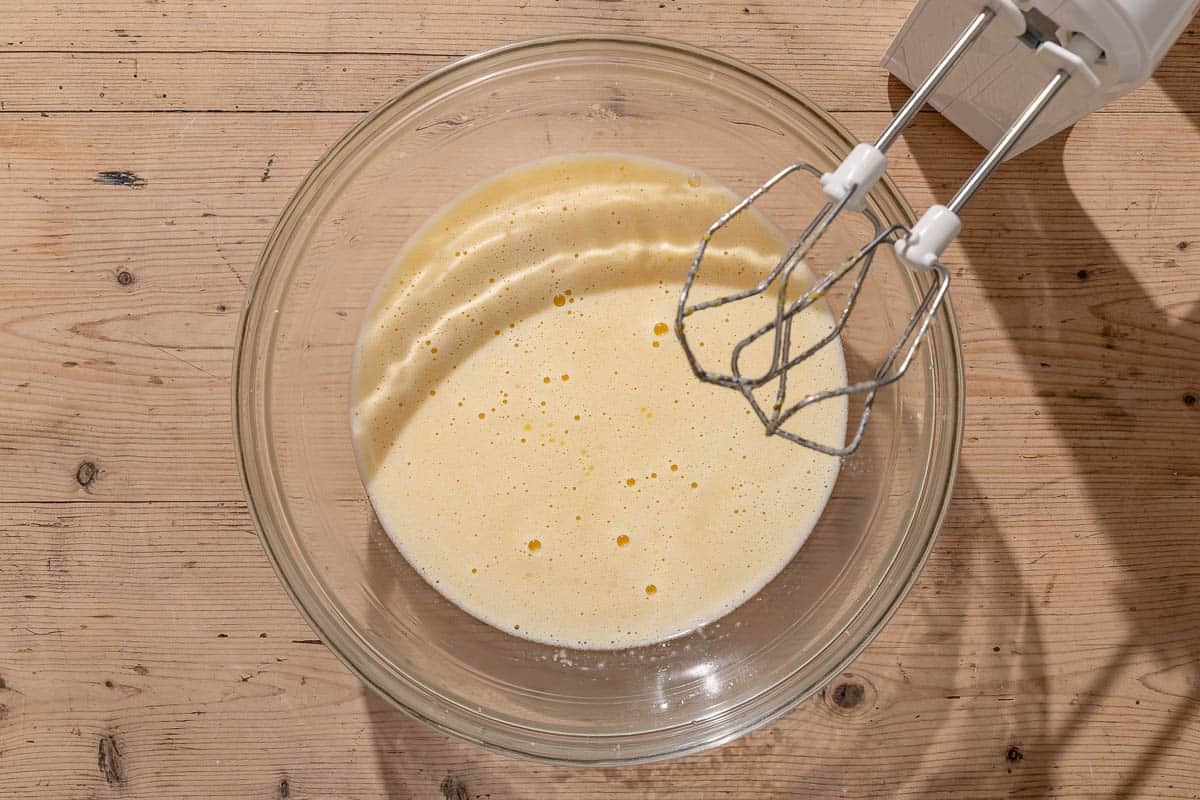
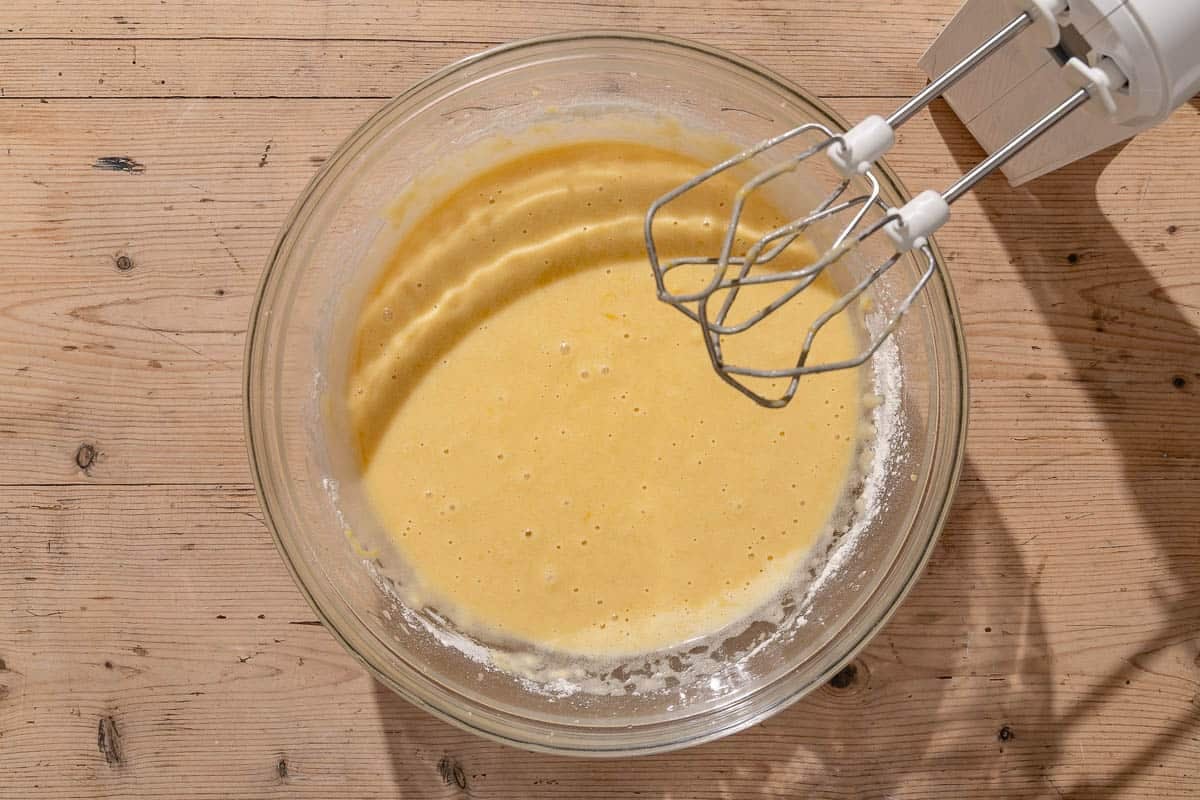
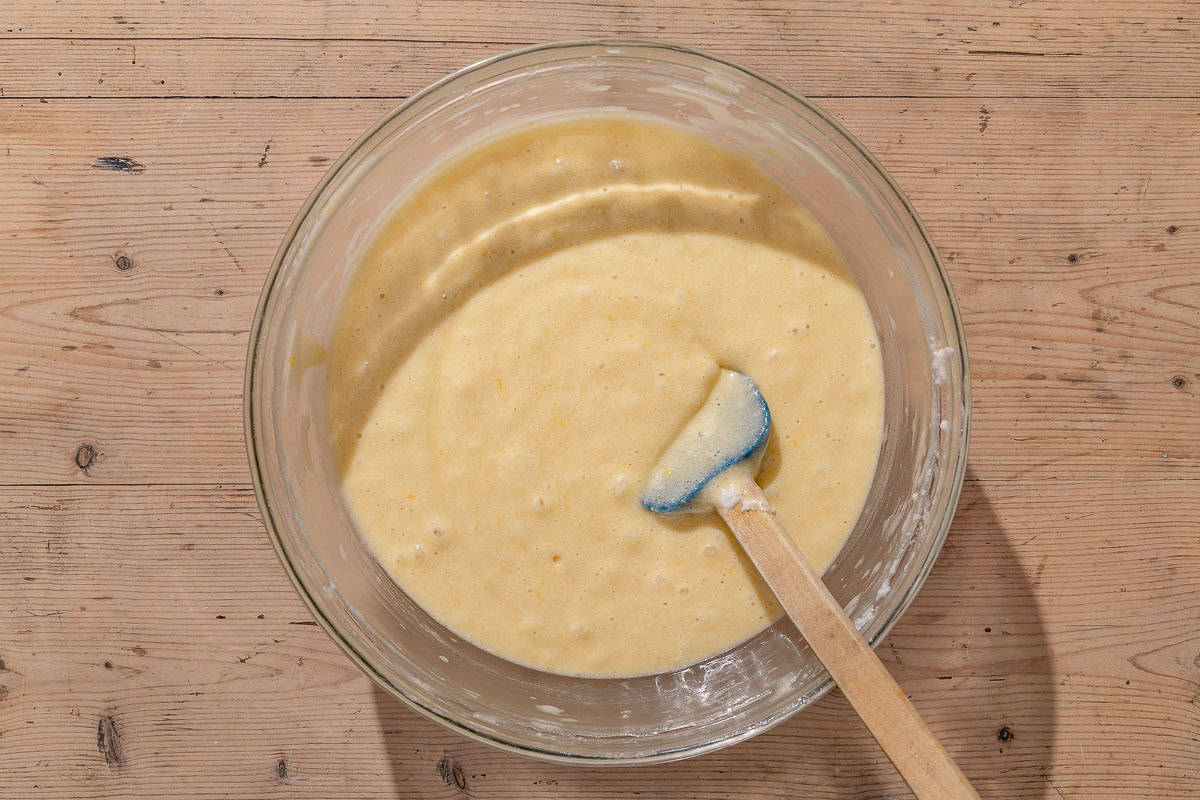
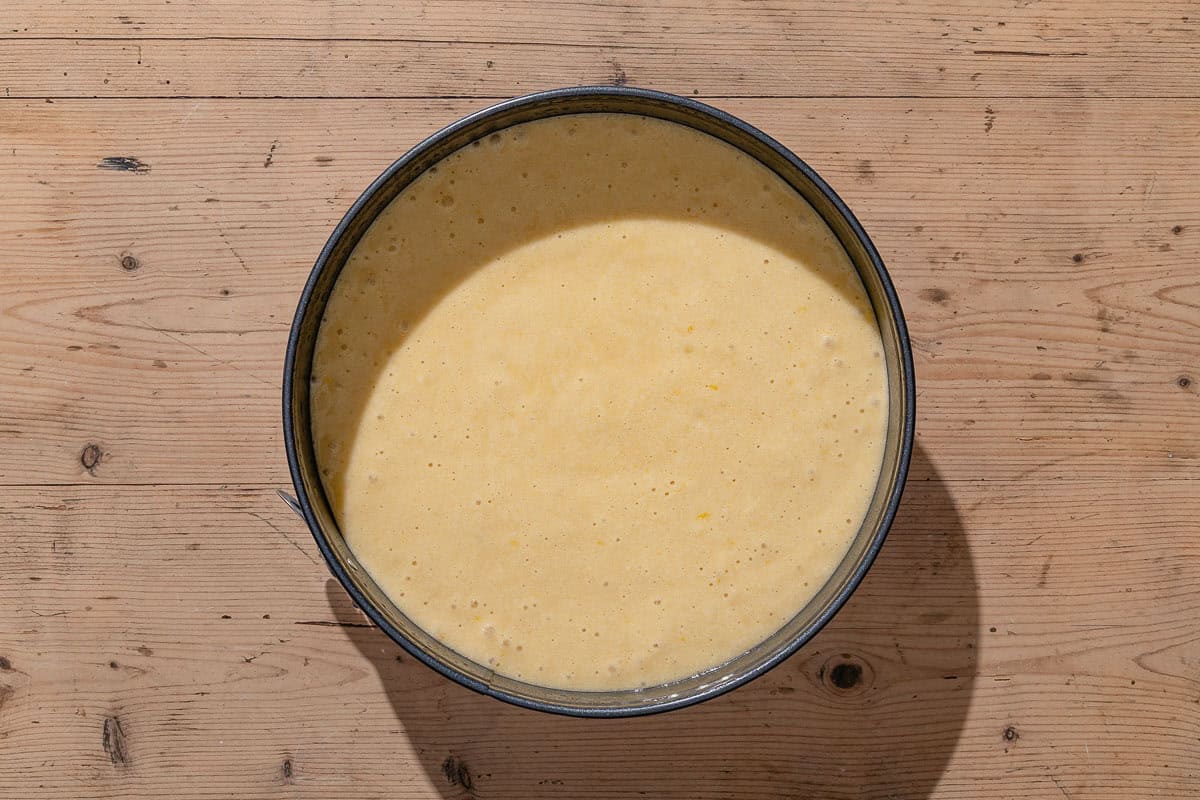
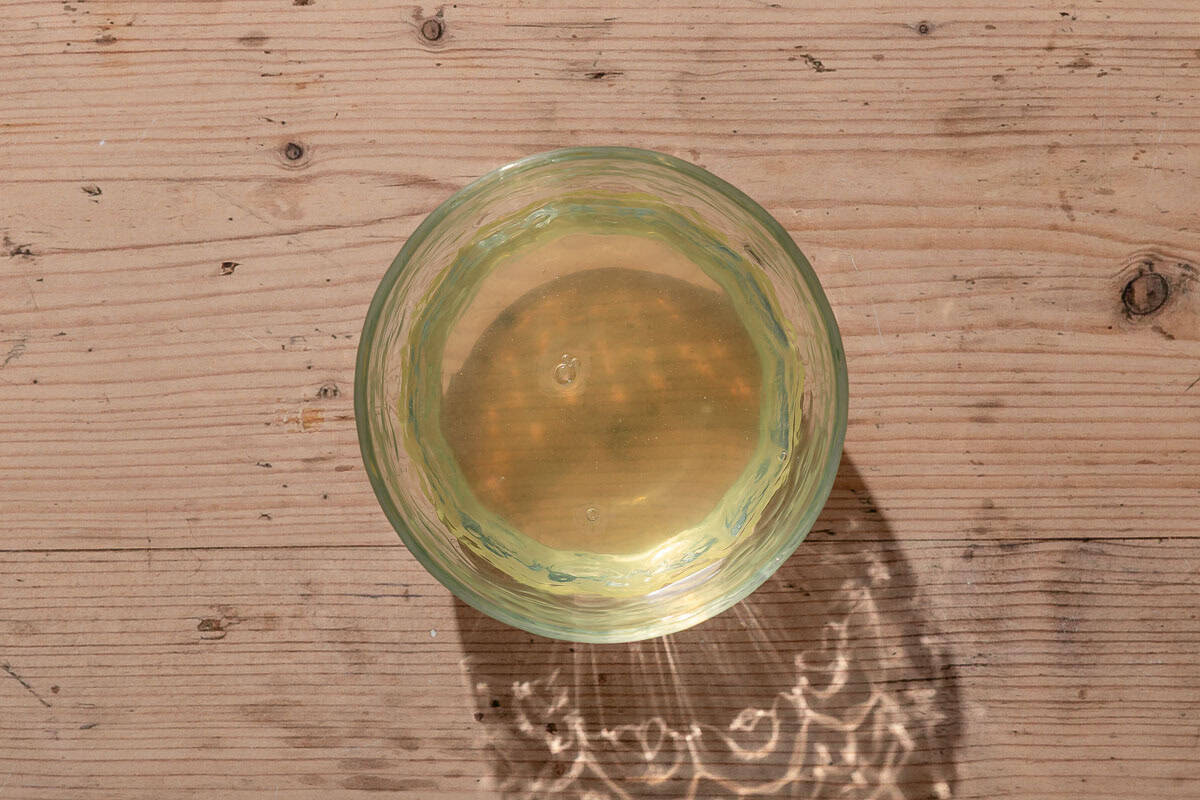
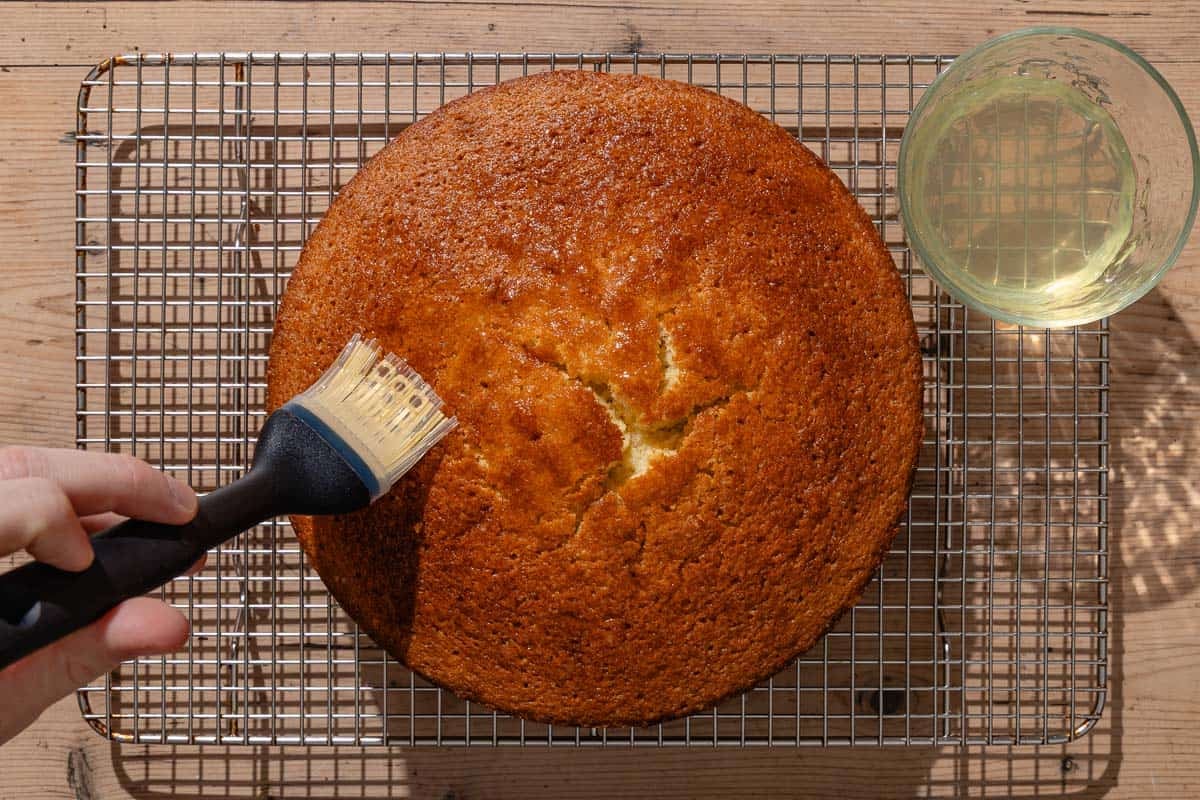
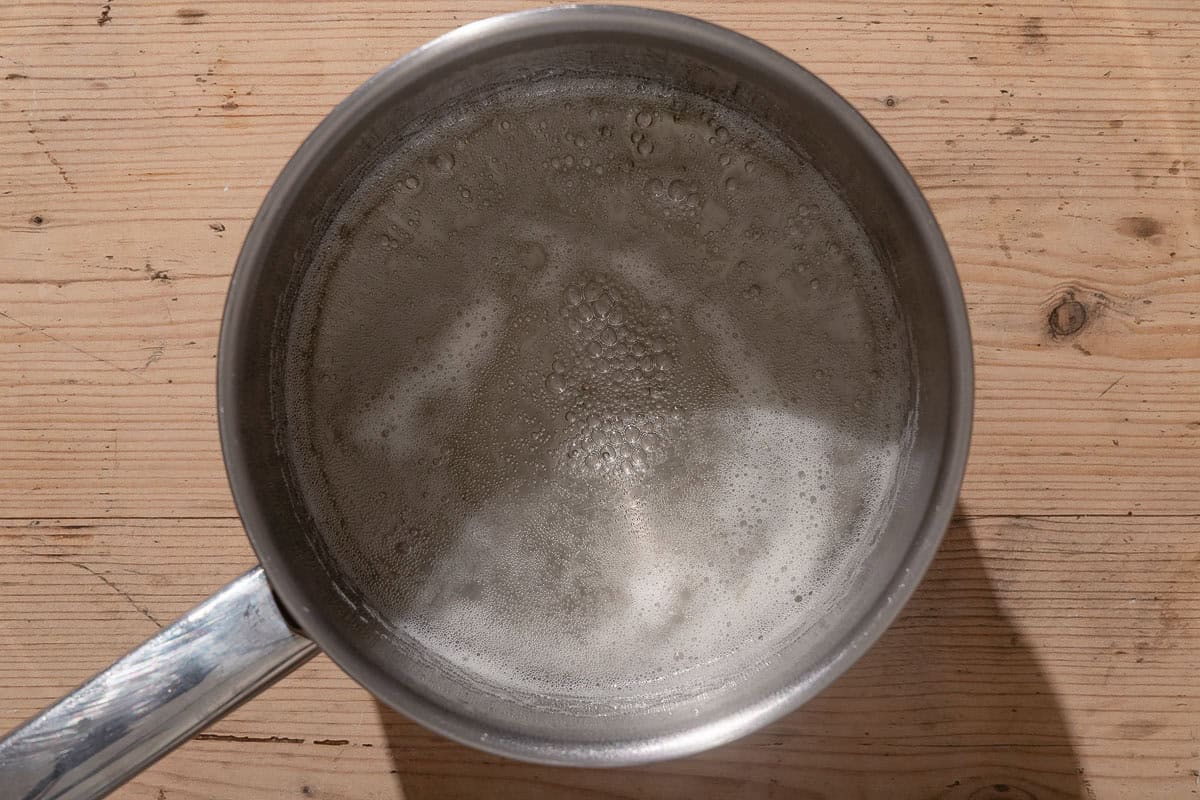
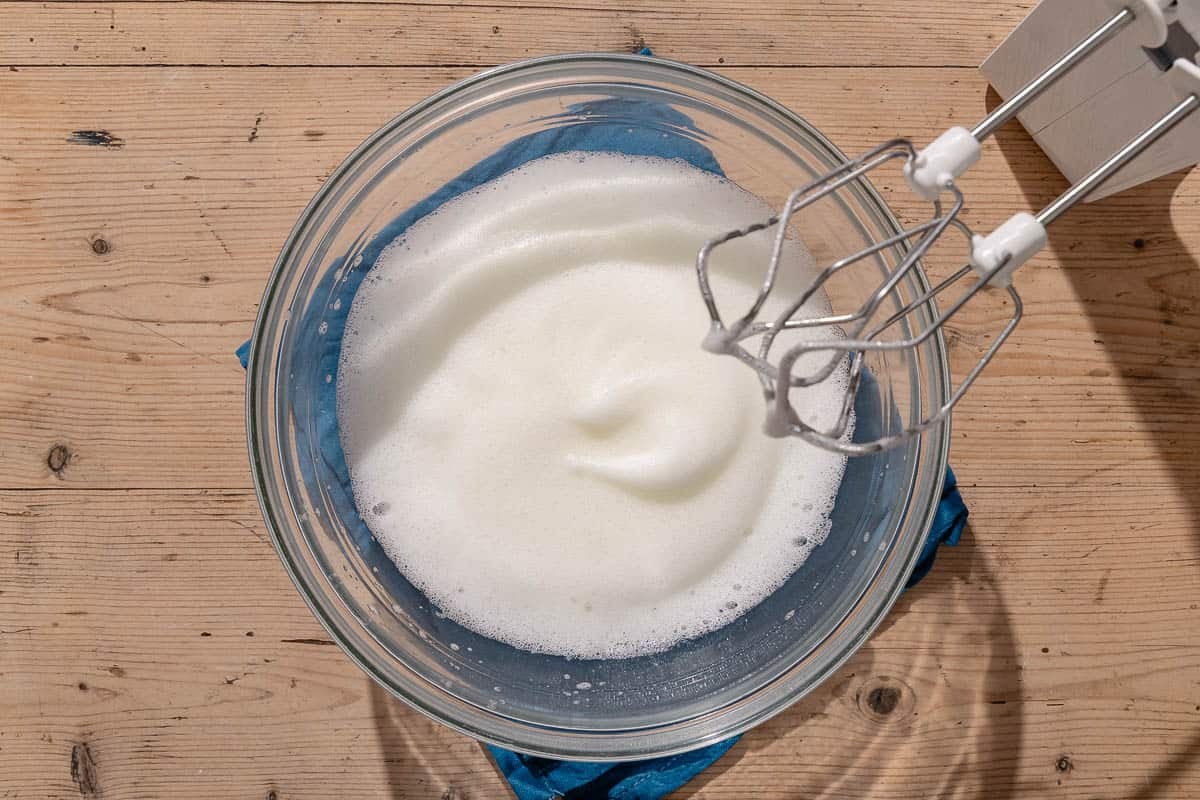
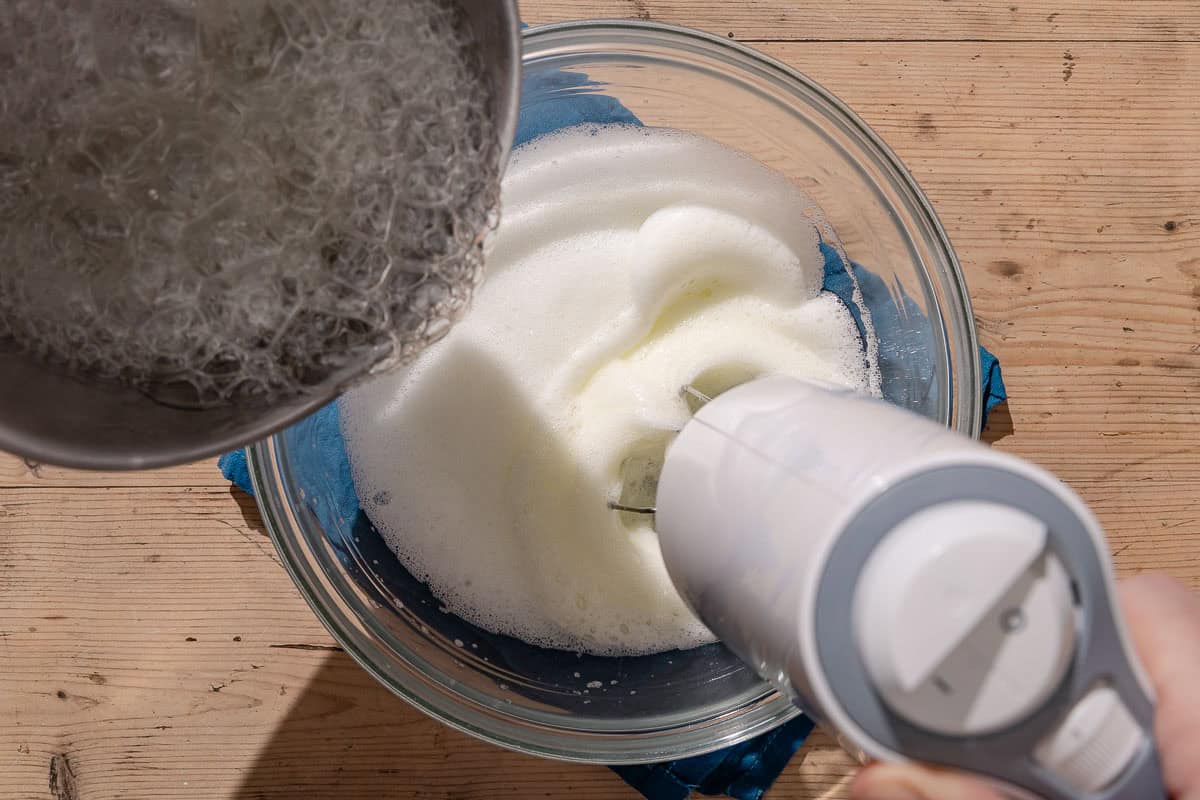
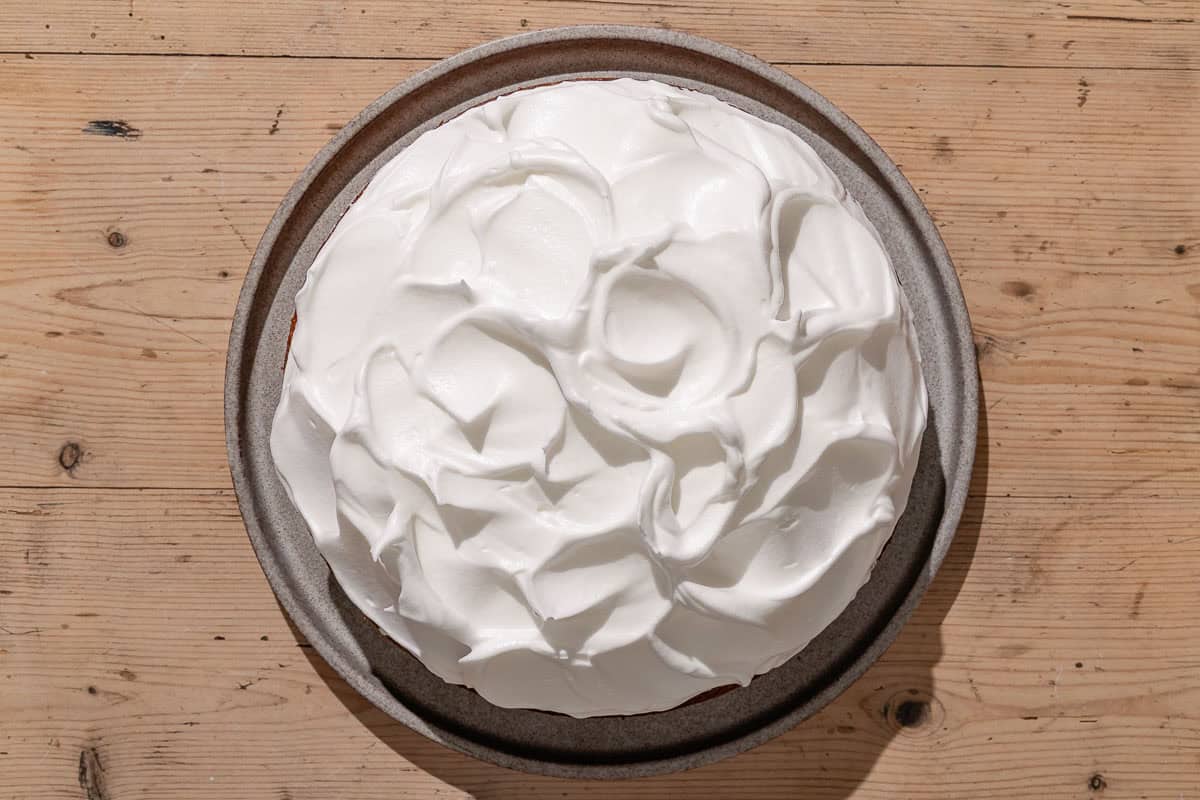
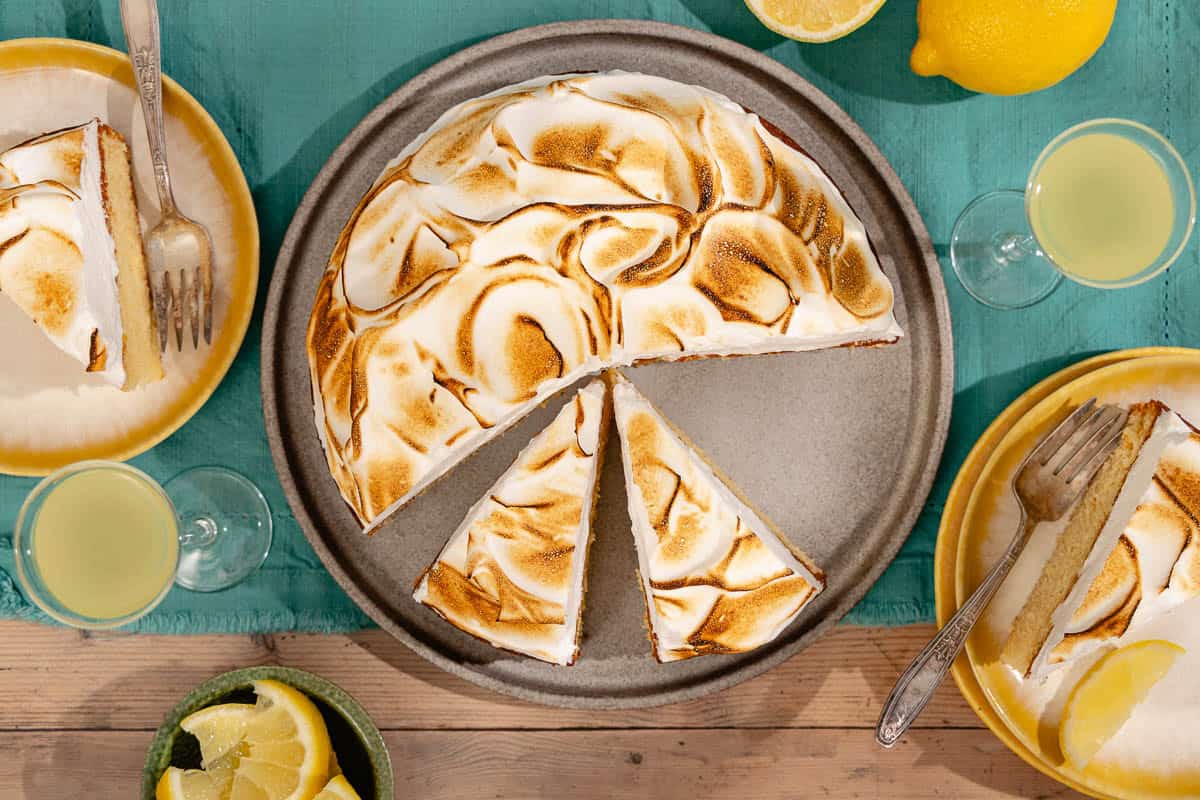
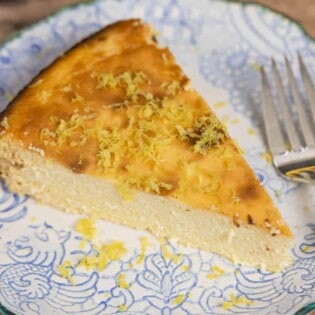


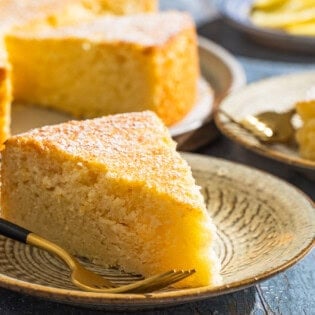
Made this for my dad for his birthday .He loved it .Will definitely make it again
Great to hear! Thanks, Teri!
Was very good. But I cooked cake a little to long was a little dry.
Our family loved this recipe! I made two for the 4th of July, and as time was late, I did not have time to complete the meringue. We added some of the lovely lemon syrup to heavy whipped cream, and it was very good, too!
Stunning! This cake is to die for with a making flavor and moist crumb. It was a major hit for an adult gathering. Thank you so much for the recipe. 🍋❤️
You are very welcome, Kate! Great to hear that you loved it!